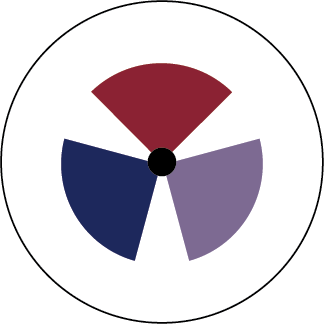Sphere of Power Part II.
Corruption leads to Despotism or Revolution.
Yesterday’s article discussed the Sphere of Power and the governmental powers inside. Today let’s walk through the Sphere. Imagine it like a beach ball with a small golf ball sitting on top. The sphere represents all the different powers inside our society. The red is the House, the blue is the Senate, the purple is the Judiciary, and the little dot in the center is the Executive. The white is all the powers not assigned to the government. Powers like the media, political parties, PACs, and corporations. The white represents our freedom in a way. Another check to the government. People can create, build and influence society in multiple ways. Society is balanced when the sphere is appropriately balanced, and the average citizen can live without fear of or from an oppressive power.
The Sphere is built to harness the power, and that power is fluid inside the sphere. Power can transfer from one branch to another, understanding that each power has checks and balances to ensure it doesn’t grow too large. People today perceive the president as having more power than the rest, but that is a misunderstanding and corruption of the system. The House and Senate check the President’s power. They are co-equal.
How did the Sphere become off-balanced?
In 1911, our House capped representation for the people at 435. Prior to that, the house was apportioned according to the population. As the population grew, so did the representation in the house. In 1911, the population was around 100 million, and the citizen-to-representative ratio was 1:220k. Today the population is around 330 million, and the citizen-to-representative ratio is 1:765k.
Politicking is common in our nation’s history but became a business as money entered the arena after the gilded age. Corporations realized they could influence power through the electioneering process. William McKinley’s election in 1896 and Warren G. Harding’s election in 1921 are different examples of corporations using their money to influence power. The McKinley campaign was a transparent form of manipulation, while the Harding campaign and what came to be known as the Teapot Dome Scandal was more behind-the-scenes manipulation. In response, people began to organize and fund grassroots campaigns and offer campaign finance reforms to battle corporate money. But individuals working against large corporations for free and fair elections have created an unequal playing field. Over time, through the supreme court and legislation, the corporation’s rights have been expanded to equal that of the individual. What used to be considered indirect corruption in campaign finance is now considered legal. Even if the corporation’s preferred candidate doesn’t win, they are rewarded by refocusing the representative from governing to fundraising. They win by monetizing the representatives’ time. The only way to run for office is to listen to those who pay the bills. If you can’t pay the bills, you can’t run. When Politicking becomes about who can pay to have their message heard over what the message is and who says it best, then we are not living in a system with free and fair elections.
What does this type of electioneering system do to a government? It corrupts it from the inside and out. Corporations buy enough politicians to confuse the debate. They use their wealth to purchase media and advertising to frame the debate for the people. All while hiding their political donations through PACs. Does this mean that all politicians are corrupt? Does this mean that all corporations are corrupt? Or that all PACs are a money laundering scheme? No, absolutely not. But enough of them are to start serious societal decay. Just look around. Our cities look like a war zone some nights. Our politicians won’t participate in civil debate. We have massive inflation, income inequality, global tensions, and economic instability. Policing, education, and infrastructure issues. And worst of all, there is no hope that anything will change. These are all warning signs to calm down and get serious about our politics. We need to focus quickly, or the house of cards or sphere will collapse.
Looking at the images above. As our population grew, so did the power from outside. With a lack of proper authority, society suffered. Congress was unprepared and understaffed to handle these problems. As a result, Congress began ceding its power to the executive. An example of this is the War Powers Resolution of 1973. Instead of understanding the issues, Congress was distracted by corrupting influences. By 2020, the power from the Senate, House, and Judiciary has been concentrated at the top with the Executive. Instead of expanding the sphere of power, our leaders stretched it. The free system of debate in Congress is now controlled by the speaker and majority leader. Instead of the people debating and writing law, the President governs by executive order, and the Supreme Court is expected to interpret and settle law. If we are not careful, the concentrated mass of power in the executive sphere could grow so large that it encompasses all the power. See below. Or, the people could resist and create a revolution. In the history of man, whether it’s a despotic government trying to maintain control, or a people fighting for their freedom in revolution, the average citizen is the one who suffers.
Where do we go from here? How do we balance power? First, we need to understand the corrupting influence fully. In the next article, we will discuss the powers of the Media, Corporations, Political Parties, and PACs. We will also discuss Money Laundering, indirect corruption vs. direct corruption, and Citizens United.
If you missed Part I, see below.







